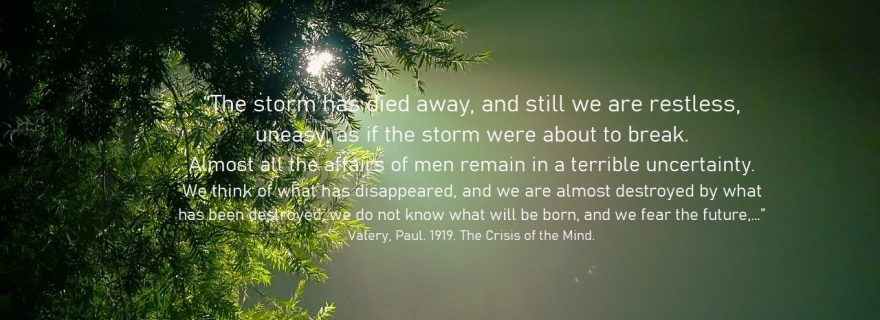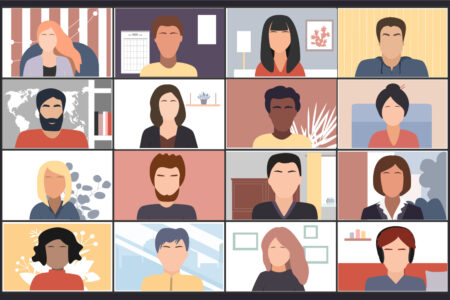A blind spot in recognizing common mental health problems
Mental health problems are difficult to signal. Fortunately our awareness about many mental health problems has increased somewhat in recent years. But are we sensitive to anxiety disorders, the most common mental health disorder over the lifespan?
We know that half of all people with mental health problems had them already before the age of 15, and another quarter before the age of 25. However, early recognition of those who might benefit from mental healthcare remains a difficult task. This is especially true for the so-called internalizing problems: anxiety disorders and depressive disorders. They are often neither easily observable, nor directly alarming, and therefore may not be picked up as a problem by friends and family. Fortunately, the issue of depressive disorders has been put high on the wellbeing agenda, and many programmes are being developed to improve public knowledge of this debilitating problem.
Anxiety disorders
But how about anxiety disorders? Anxiety disorders have an earlier age of onset and are initially difficult to differentiate from normal fears that are part of some developmental stages of our lives. By the time an individual realizes that this continuous feeling “as if the storm were about to break” has lasted too long, many have just accepted anxiety as part of their personality. The unease of anxiety often makes people stop doing things they would like to or escape to harmful coping. They may start to build their life around it, and then the original problem is often masked by the cascade of other problems that have also emerged. It is common for a therapist to find that anxiety is the underlying factor when someone comes in with, for instance, a suspected substance use or depressive disorder.
Under-recognition
The fact that anxiety disorders are easily overlooked, and that only a minority of those suffering find their way into focused treatment, has been known for some time. What we did not know, however, is when this under-recognition starts. Until now the recognition of anxiety disorders was researched as an end state: diagnosis as a product of decisions professionals make. When viewed from the perspective of decision-making, under-recognition of anxiety makes sense given the condition’s core characteristic of avoidance. With every new piece of information the professional obtains – every question they ask, observation they make, or test they perform – they rule a given hypothesis out or in. In this way ultimately reaching a diagnosis. The challenge for the recognition of anxiety disorders, however, is on the one hand that physicians are unlikely to receive all the information as clearly as they would like; and on the other hand that anxiety disorders are very silent problems from a societal point of view. Society is not very aware of how widespread and debilitating anxiety is. So our research team wondered do healthcare professionals even think about anxiety as the probable underlying factor when they are facing typical symptom presentation for children with anxiety disorders?
A stark contrast
We investigated this among general practitioners (GPs). In many countries they are the person to go when one has health concerns and play a central role in problem recognition and referral. In fact, the study question raised when my colleagues and I were analyzing referral letters and we noted that especially children who were ultimately diagnosed with anxiety had often not initially been referred as such. To test our question, we created descriptions of hypothetical patients such that the descriptions would portray the image of a real life consultation: the accounts referred to problems that could be related to various underlying issues, including the range of symptoms common to children with anxiety disorders. Inclusion of various symptoms was necessary because such children seldom present with a single clear problem. We put the descriptions to GPs as well as to mental health professionals, and asked both for their preliminary diagnoses. Based on what was there in these descriptions, we expected that an anxiety disorder diagnosis would be selected in at least 30 to 60% of cases. What we found however was a selection rate of 14.8% among the GPs and 40% among mental health professionals. This was in stark contrast to the situation with other mental health problems, where there was little difference between the two groups of healthcare professionals.
Awareness
In practice, this means that GPs may be inclined to dismiss anxiety even at the beginning of the diagnostic process. When we view this from the point of view of how important the initial interpretation is (see “anchoring bias”), it is not farfetched to imagine that this lack of recognition might impede the GP from exploring and eliciting further relevant signs of anxiety. This is not to say that we should advocate the medicalization of every form of mental health disorders. But given how common and persistent these silent problems often are, improving our knowledge of the symptoms and impact of anxiety is necessary. That is why awareness is the key.
Experience is the best teacher, as they say. Perhaps living through the numbing effects of fear during the current corona pandemic may help us to develop an eye for this covert yet major problem.





